A new offering because someone thought I was ‘new’ today.
In honesty, as a 25-year-old woman I am still working through, processing, and replacing learned trauma responses from my childhood. I have made great progress on this as an adult, but as anyone with a history of child trauma will tell you, it is likely life-long work. For me, the trauma response shows up as heightened anxiety, stress, worry, and a strong sense of overwhelm which can be followed by despondency.
I learn this again and again and recognize the patterns of my cycle. At the turn of the New Year, with heightened hormones and emotions, I spent a few days in a period of confusion. Everything felt foggy: my decisions, my motivations, my next-step actions.
While I waded through this confusion and fogginess, I felt lost. I tried to stay calm, but at one point my anxiety response was activated, and I felt overwhelmed. I wondered why. Why do I have this response, when by body is not threatened? When I am not in physical danger in this moment, why do I feel so strongly that I am?
I went for a walk, I prayed aloud when I was alone, and I called some loved ones. After some time, the fog lifted, and clarity came. Thankfully, we can always trust the clarity to return - the fog will lift, and the brightness will bring clarity.
This clear realization was such: I have tended to call it ‘overwhelm, uncertainty, insecurity, etc,’ but it’s really that that I am not comfortable with confusion, as many of us are not. My body may perceive confusion as a threat, even when it is not, because of learned responses to confusion and threats, especially when I was too young to know what to do with those emotions.
I realized that for me, my body perceives confusion as a threat, and the response to that threat brings on an anxiety that seems to run rampant over my body and mind.
Confusion = threat.
Threat → debilitating worry, stress, and anxiety.
The body reacts strongly and quickly to real and perceived threats according to our inherited biology, our fight or flight reflex driven by our hypothalamus, pituitary gland, and adrenal glands. Dr. Bessel van der Kolk, one of the leading psychiatrists on trauma research, writes about trauma patterns in his book “The Body Keeps the Score.”
My higher self, my best self, myself that is led by God and wisdom, realizes that I can pray. That I can meditate and speak to my subconscious. That I can work to heal. So, I try, I make an effort. Especially when these trauma responses arise, I move slowly. I commit myself to prayer and meditation. I pet my kittens. I cook a delicious, warming meal. I recover and the bad feeling passes on, as all feelings do.
However, this lesson reappears, and I hope that each time, my reaction will be a bit better.
For example: This week - this morning at work, I received an email that was less friendly than any other I have received during my year and a half at this job.
I like this job. Its remoteness, flexibility, and learning curve makes it a dream job for me, however some are uncomfortable with this structure.
Photo of me at work on a day that I liked my outfit:
As I read this unfriendly email, I could feel the scared feeling creeping in on me. My shoulders rising to my neck, my stomach tightening, my breathing feeling constricted, though I was in no physical harm, nor at threat of losing my position. However, the email writer misunderstood my role, thought that I had made an error, and that still stung. I read it and chose to stay calm, chose to return to it another time, after my meditation.
I chose slowness of response, peace, calm, and ease. Those are important value markers for me; if I have the opportunity to choose, allowing myself the choice of slowness. I.E. Take your time on these trying things.
Since I could not push off this simmering emotion and did not want to wait for it to rise to the top of my mind, I stepped outside for a break and did a 12-minute meditation. That is what I want to offer now - and if you have read this far, I thank you - a meditation for recovering from a perceived or real threat.
Once you are in a place and moment of bodily safety, this meditation may be right for you. Feel free to use these words, modify as you see fit, and return as needed. This is what I have found works well for me - especially in terms of calming, speaking to my subconscious, and speaking my mind back into safety.
Note:
Centering on the breath - focus on deep inhalations and exhalations.
The power of repetition. The power of personal mantras.
“I/you/we” structure for speaking to all aspects of the self.
Giving yourself the time and care needed.
Embodying love and sending love.
Key phrases from the meditation:
I am safe. You are safe. We are safe.
I am protected. You are protected. We are protected.
I am loved. You are loved. We are loved.
I am safe, protected, and loved. You are safe, protected, and loved. We are safe, protected, and loved.
I am loved. I give love. I receive love. I am love.
You are loved. You give love. You receive love. You are love.
We are loved. We give love. We receive love. We are love.
Music:
Rosa Luxembourgo - Finn Lenoir
Biome - Ever so Blue
Images of the mantras:
thank you and peace,
Sophia


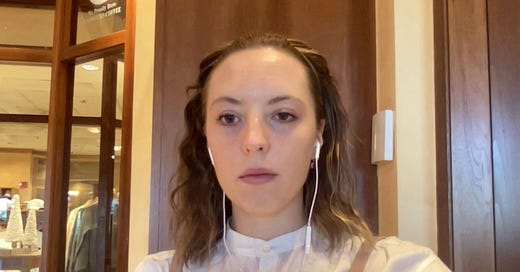



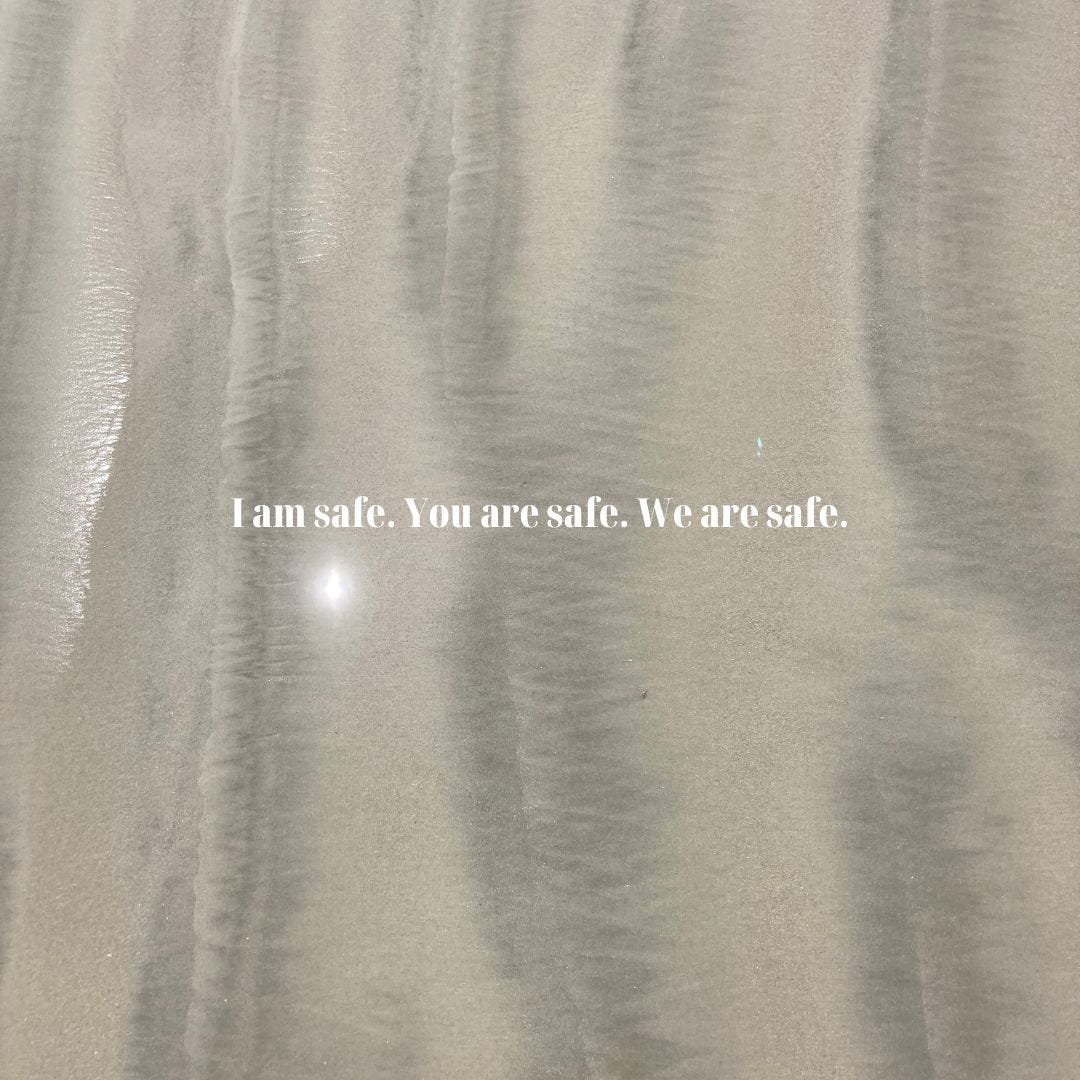
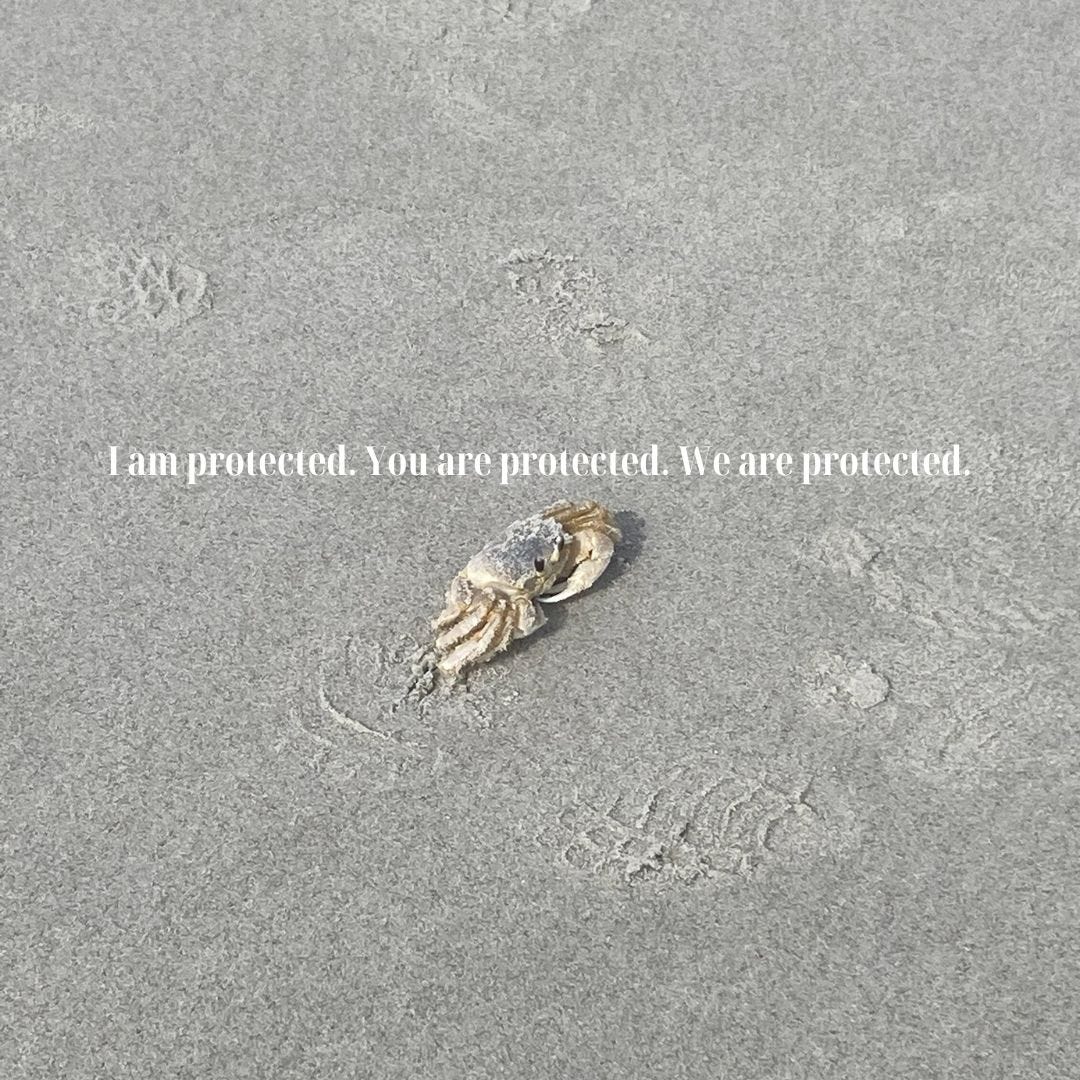

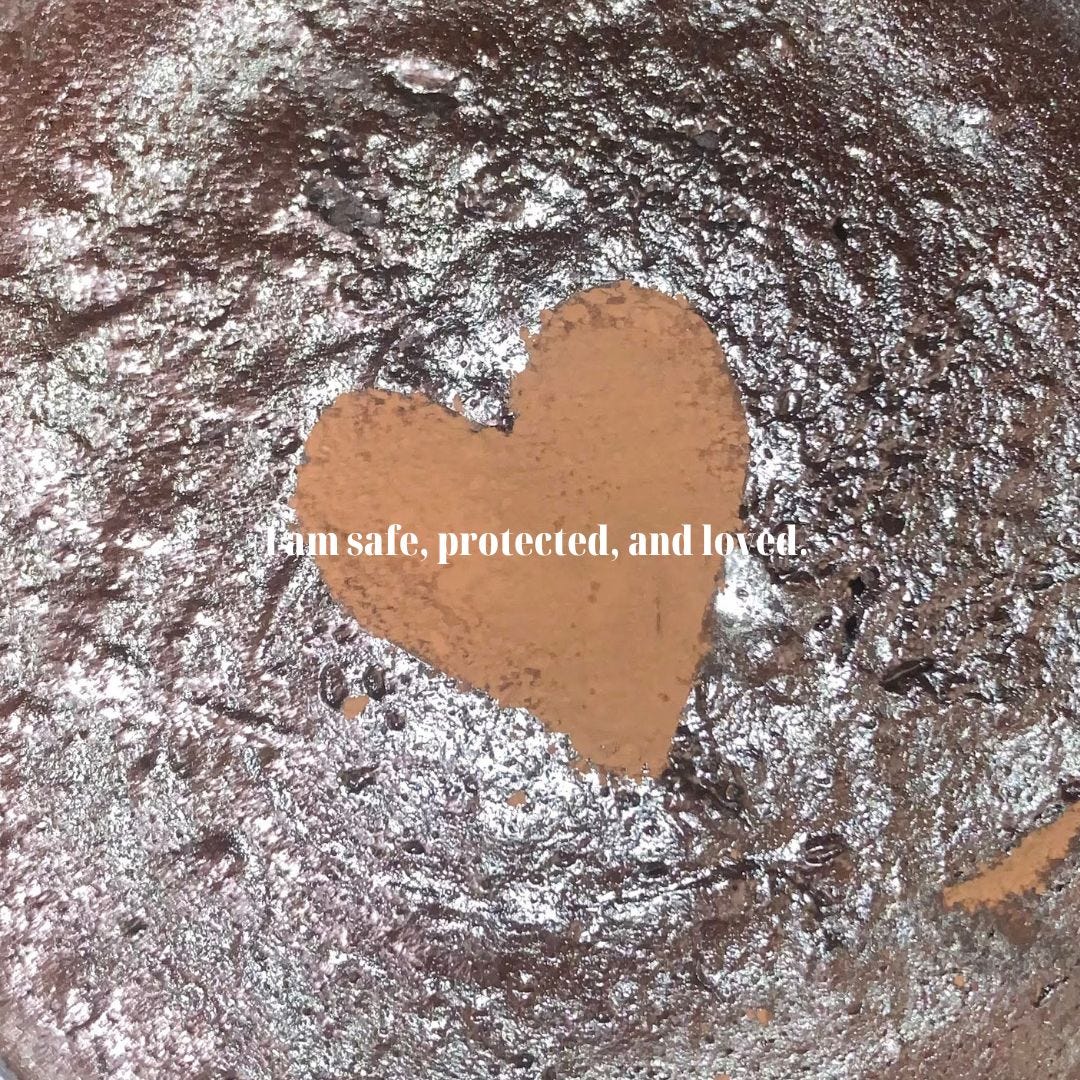


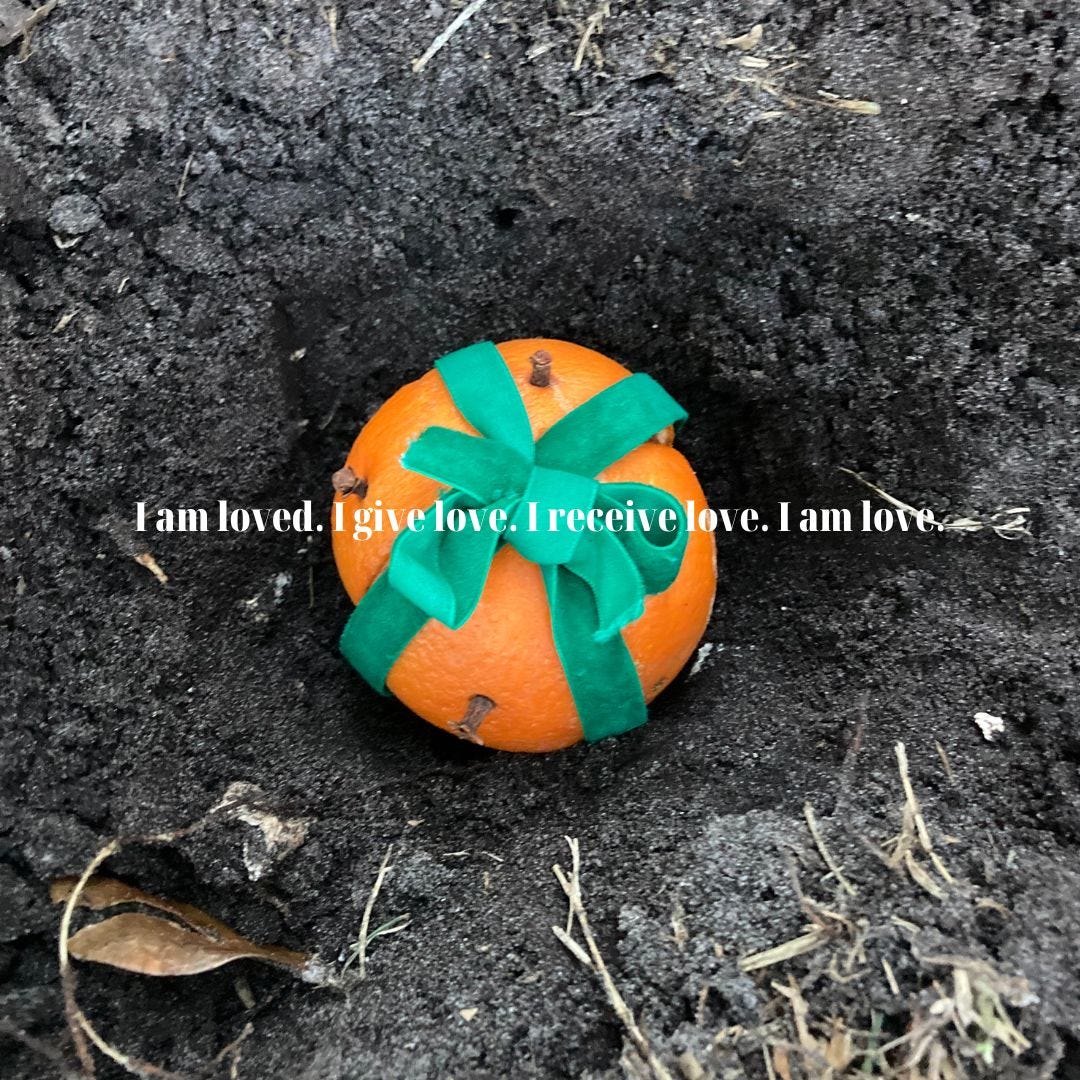










Share this post